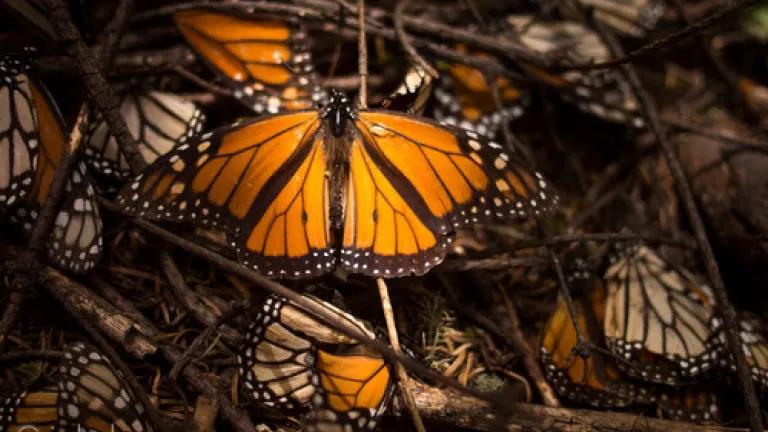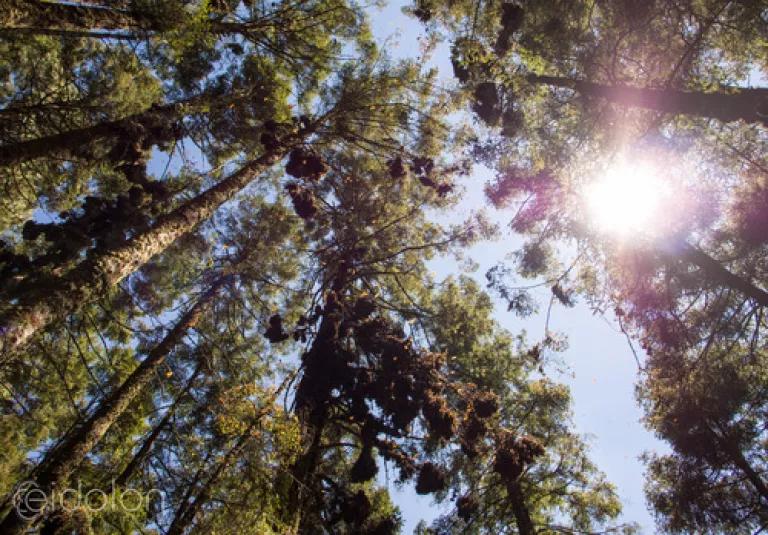
Every year at this time millions of monarch butterflies are on the move, approaching the mountainous forests of central Mexico where they will spend the winter under the shelter of oyamel trees. Monarchs have instinctively undertaken the over 4,000 kilometer-long migration from Canada and the US to Mexico for millennia and the arrival of the first butterflies to their destination often coincides with Mexico’s Day of the Dead celebrations. To some local communities the arriving monarchs symbolize departed souls paying their yearly visit. The big question this year has been how many monarchs will arrive?
Last year the number of monarchs that arrived in Mexico hit at an all-time low. Only 33.5 million butterflies were registered in the overwintering grounds in comparison to the 350 million long-term averages seen over the past 15 years, and far below the high of one billion in 1997. This year, preliminary estimates in the monarch breeding range indicated the numbers may be a bit better, but still dangerously low. What’s clear from the long-term trend we’re seeing is that the monarch migration – one of the world’s most impressive natural wonders – is in danger of disappearing. For the monarchs of North America to survive, action is needed along its entire migration route. Mexico must continue efforts to protect the monarch overwintering lands and the US and Canada must take urgent steps to protect the areas where monarchs reproduce.
While illegal logging is a historic threat to the monarch hibernation sites in Mexico, in recent years there has been a marked improvement in and around the Monarch Biosphere Reserve in central Mexico. The results of a ten year monitoring effort showed that better enforcement and support for alternative income generation activities has been paying off. Since 2008, large scale illegal logging has dropped significantly. Over the past year, monitoring also showed that efforts to reduce small scale illegal logging are also working.

The success in addressing illegal logging is in part due to the efforts of local groups and communities that live near the Monarch Biosphere Reserve and work to protect and restore monarch habitat. A documentary that’s currently in development will look at one community in particular where monarch conservation has become a way of life. Every year members of the community participate in communal reforestation efforts to restore monarch habitat and volunteer to patrol the surrounding forest year-round to keep illegal loggers out. You can keep up to date on news about the film here and see a brief trailer below (click CC for English subtitles):
Los Guardianes - Teaser from Eidolon Films on Vimeo.
As illegal logging increasingly comes under control in Mexico, the most immediate threat to the butterflies is now hundreds of miles away. In the fields and roadsides of Canada and the US, the indiscriminate use of toxic agrochemicals is destroying milkweed plants, the only source of food for monarch larva. The use of weed killers like Roundup has exploded since the 1990’s when crops resistant to this herbicide were first introduced. The increased use of Roundup has nearly wiped out useful plants, like milkweed, from large portions of the United States. As fewer monarch larvae survive, fewer monarch butterflies will complete their instinctive migration to Mexico.
To save the monarch migration, Mexico’s government and communities will need to continue to work to protect the overwintering forests. But here in the US the government needs to place some common sense limits on the use of RoundUp and similar chemicals. You too can help ensure the monarchs keep paying their yearly visit to Mexico by helping to plant milkweed and telling the EPA to adopt herbicide restrictions now.
Photos and video courtesy of Tessa Moran.

